I recently returned from a trip to the Central Alps in Italy and Switzerland. All things considered, the Alps might be my favorite mountain range to visit. It has the incredible relief of the Andes and Himalaya (almost), accessibility of the Rockies, and food of … Italy! The Alpine mountain chain extends basically along the entire northern Italian border. The Alps were formed from the continental collision of the Apulian plate with the European plate from the late-Cretaceous to Tertiary time. The next four post will take you on a transect through the central Alps from Milan, Italy to Bern, Switzerland.
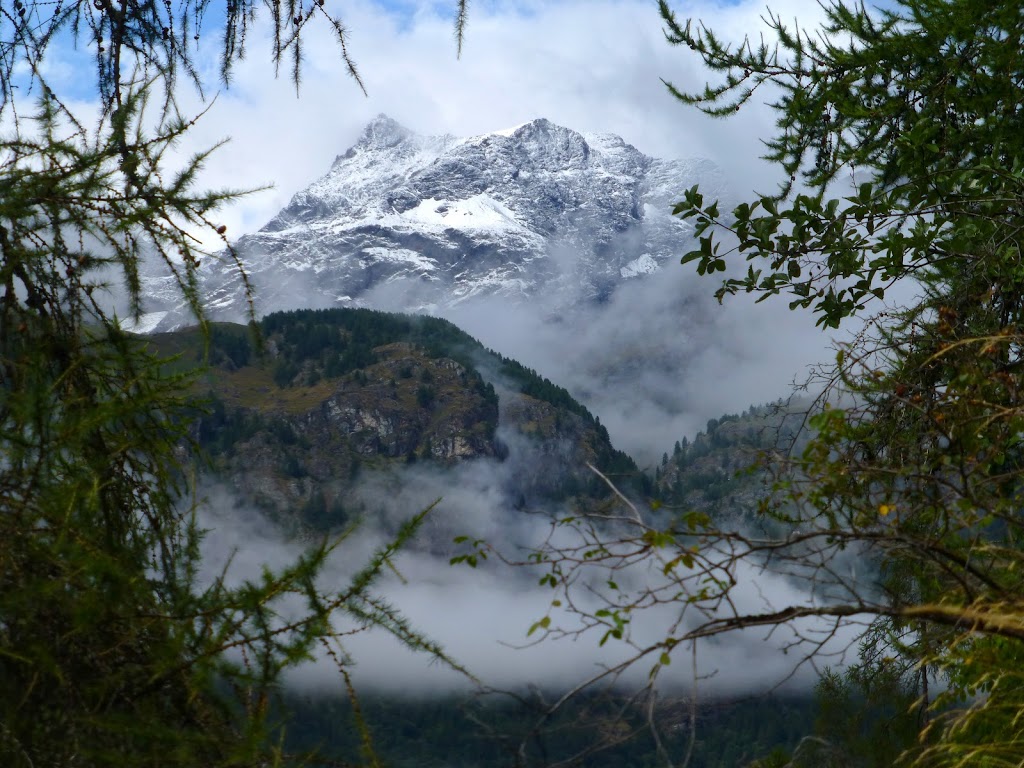
During the Tertiary convergence of the Apulian microplate and Europe, the Tethys ocean subducted beneath Apulia to the south consuming over 500 km of oceanic crust. As ocean crust became the European continent, the entire thickness of Apulian crust began to turn in on top of itself and rotated over 90º overturning the continental crust. The resulting impact has exposed a spectacular cross section through the Apulian crust. Traveling north from Milan, we crossed the Po foreland basin and deformed Mesozoic strata of the Southern Alps into the Hercynian basement of granulites and layered gabbros. The Hercynian basement was formed during a ~300 Ma orogenic event time equivalent to the Alleghanian orogeny in the US.
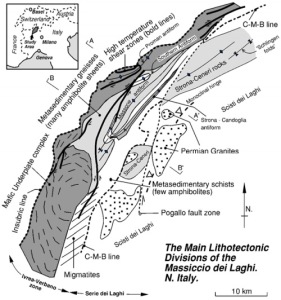 |
| Lithotectonic map from ETHZ |
Further north we crossed the Insubric line which demarcates the boundary between Apulia and Europe and is in essence the original suture potentially dating back to the Hercynian orogeny. Across this line we entered a mysterious lozenge shaped crustal block cored with granulite facies rocks and rimmed by retrogressed greenschist. This is the Ivrea-Verbano Zone. The Ivrea-Verbano zone is dominated by variably migmatized metapelitic schists at the base grading to a massively banded migmatitic gneiss, known locally as a Stronalite (after the Val Strona).
Traveling northwards and up-metamorphic grade there are a large number of thick Permian-age mafic intrusions eventually dominating the Ivrea Verbano zone. The most spectacular of these is found in the southernmost part of the IV zone where a 10 km wide layered mafic intrusion is sandwiched between the high grade pelitic migmatites and the European crust.
This layered mafic intrusion is predominantly a plag-pyx gabbro with crosscutting pegmatitic pyroxenite dikes and olivine cumulates at its base. Although the compositional layering could be argued to be gneissic banding and mineral segregation, primary magmatic cross-bedding is observed affirming the original layered nature of the intrusion.
In the northeast portion of the IV zone, the base of the layered gabbro is exposed at the petrological Moho with a thin sliver of mantle lherzolite above the Insubric line. The Mohorovičić discontinuity (or Moho for short), is the boundary between the crust and the mantle. For a petrologist the Moho is the contact between the layered gabbros or granulites of the lower crust and the peridotite of the mantle. However, for a seismologist the Moho is the seismic discontinuity after whom the boundary gets its name (after Croatian seismologist Andrija Mohorovičić). Although the Moho is imaged all over the Earth by seismologist, there are few places where the petrological Moho is exposed at the surface. The Ivrea Verbano zone gives a unique view through the Apulian crust all the way to the mantle.
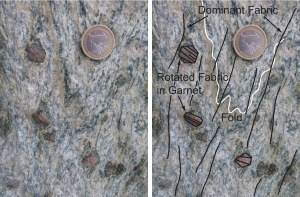 |
| Garnet-bearing migmatite in a large boulder in the Lys river at Fontainmore presumably derived from the metapelites of the Ivrea-Verbano zone. |
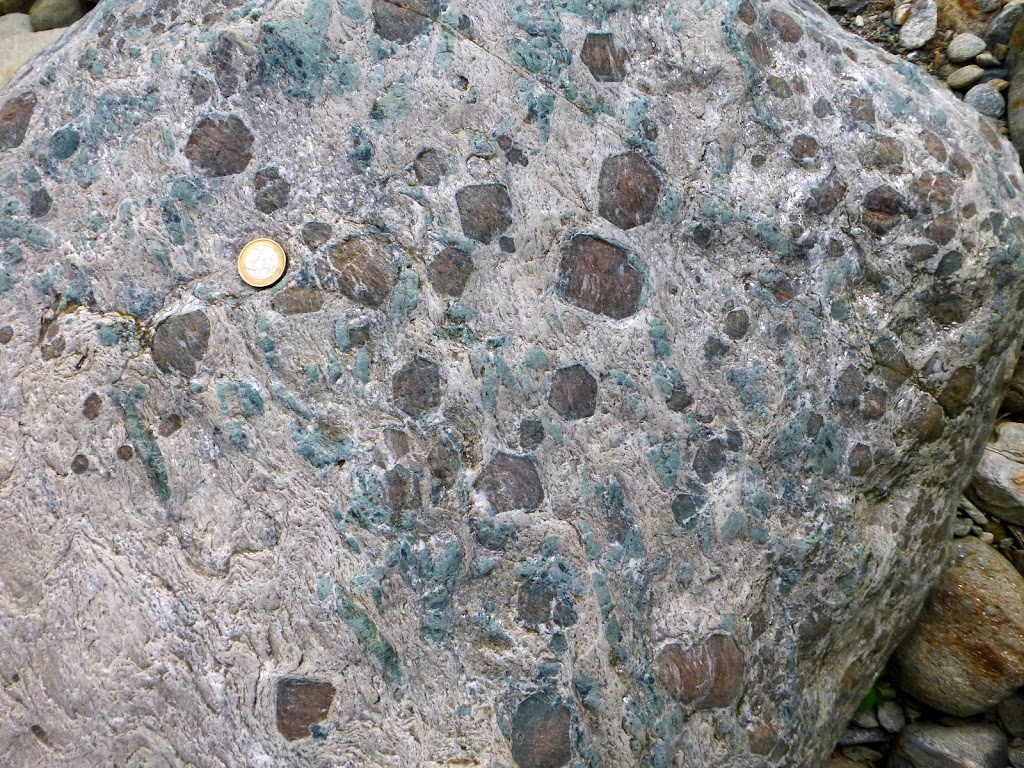 |
| Another “IV zone” pelitic boulder. |
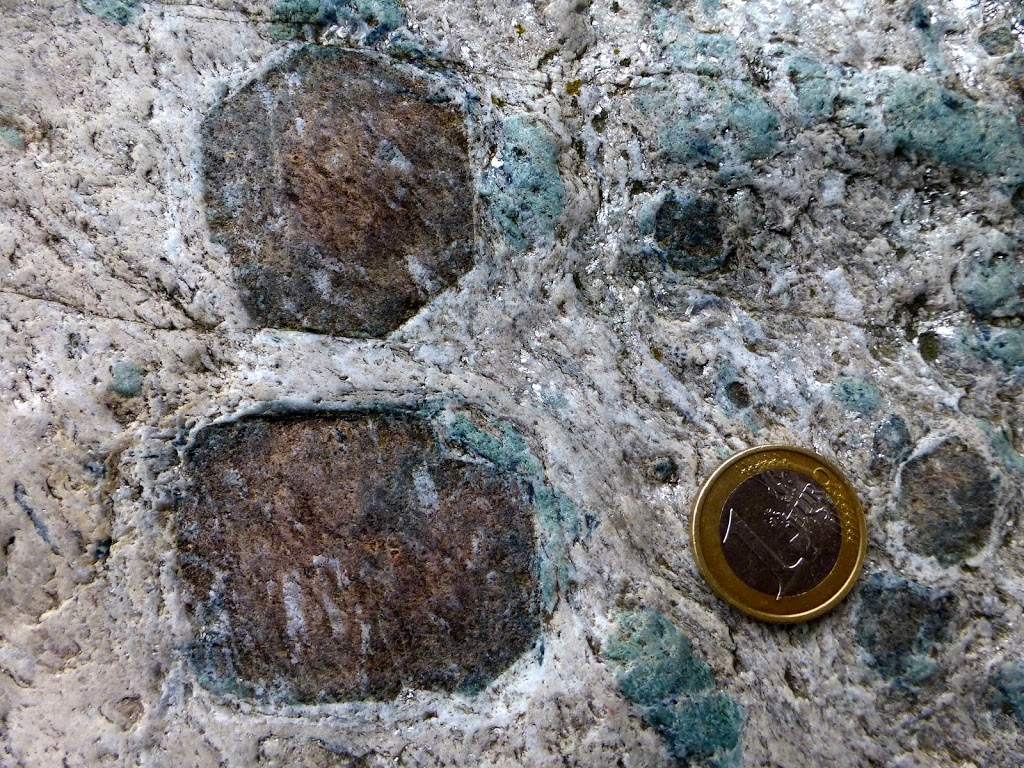 |
| Spectacular chloritized garnet rims. Coin is 2.3 cm across. |
 |
| Layered gabbro. Faint cross-bedding can be seen right of the hammer. |
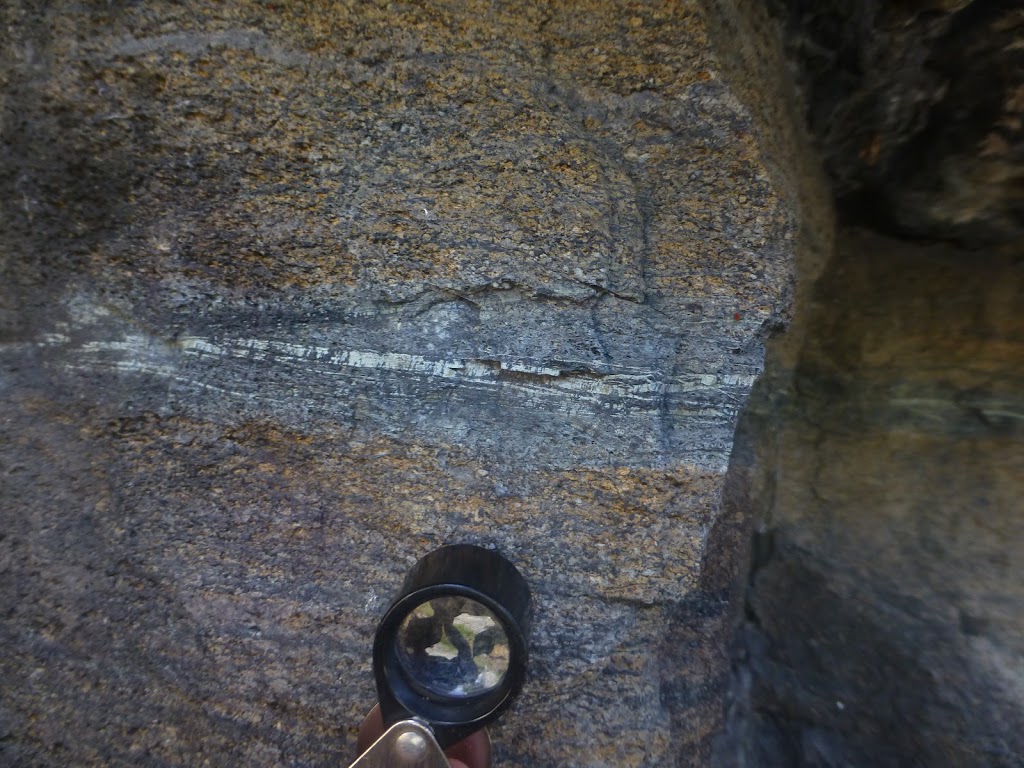 |
| Olivine cumulate altered to iddingsite. |
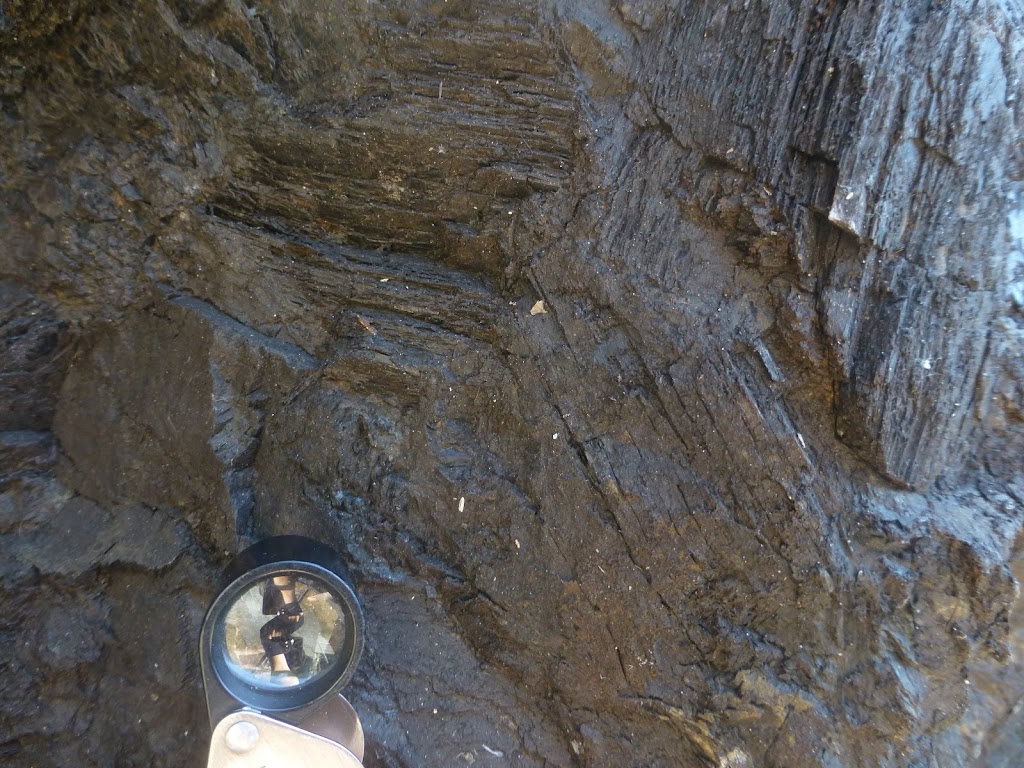 |
| Pyroxenite pegmatite |
 |
| Progressive close-up of the Moho. Left – layered gabbro, Right – serpentinized lherzolite |
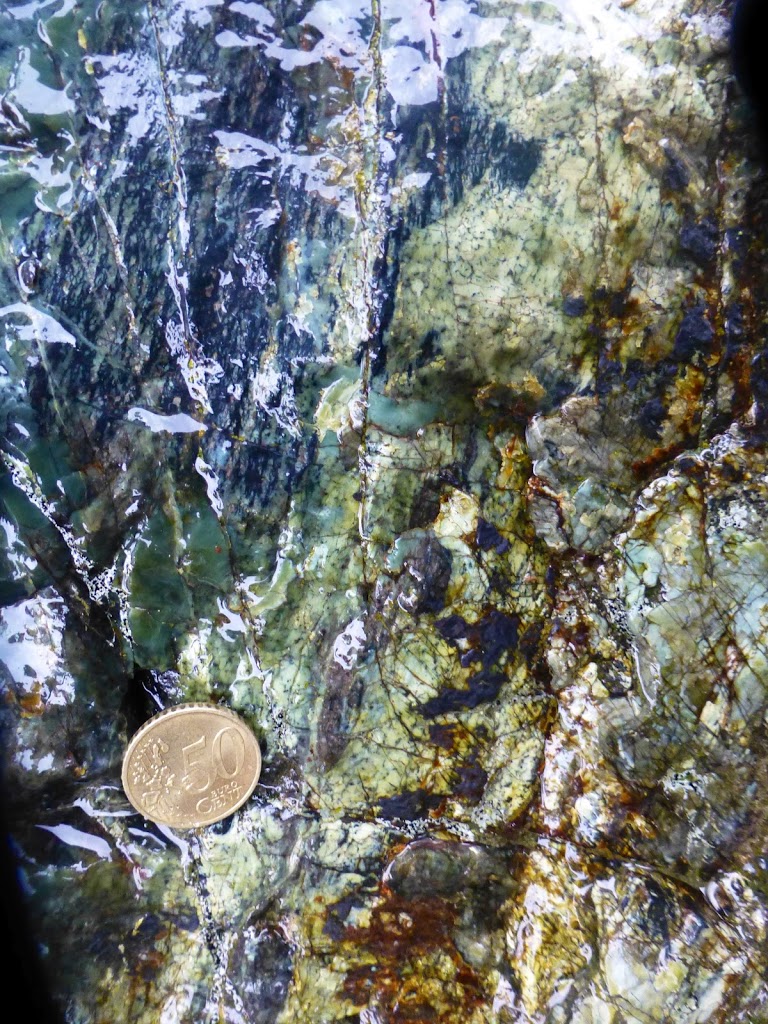 |
| Lizardite and Antigorite with Chromite(?) near Moho |
Next we will move north across the Insubric line to the Sesia Lanzo zone.
 This work is licensed under a Creative Commons Attribution-NonCommercial-ShareAlike 4.0 International License.
This work is licensed under a Creative Commons Attribution-NonCommercial-ShareAlike 4.0 International License.








![]() This work is licensed under a Creative Commons Attribution-NonCommercial-ShareAlike 4.0 International License.
This work is licensed under a Creative Commons Attribution-NonCommercial-ShareAlike 4.0 International License.

